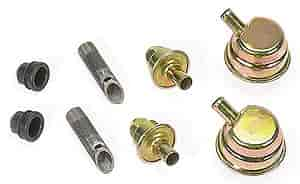I was wondering if anybody had yet done any UOAs on a car with a PCV system venting to atmosphere? I have an NA 240sx currently, however running the catch can seems to make more of a restriction than going stock. The only downside to stock is I have to change the PCV valves almost every oil change, which requires about 4-5 hours of time.
Does synthetic such as amsoil provide enough protection against these blow by fuel vapors? There is alot of talk about how bad it is, but nobody has ever provided any proof.
Thanks in advance!
Does synthetic such as amsoil provide enough protection against these blow by fuel vapors? There is alot of talk about how bad it is, but nobody has ever provided any proof.
Thanks in advance!





